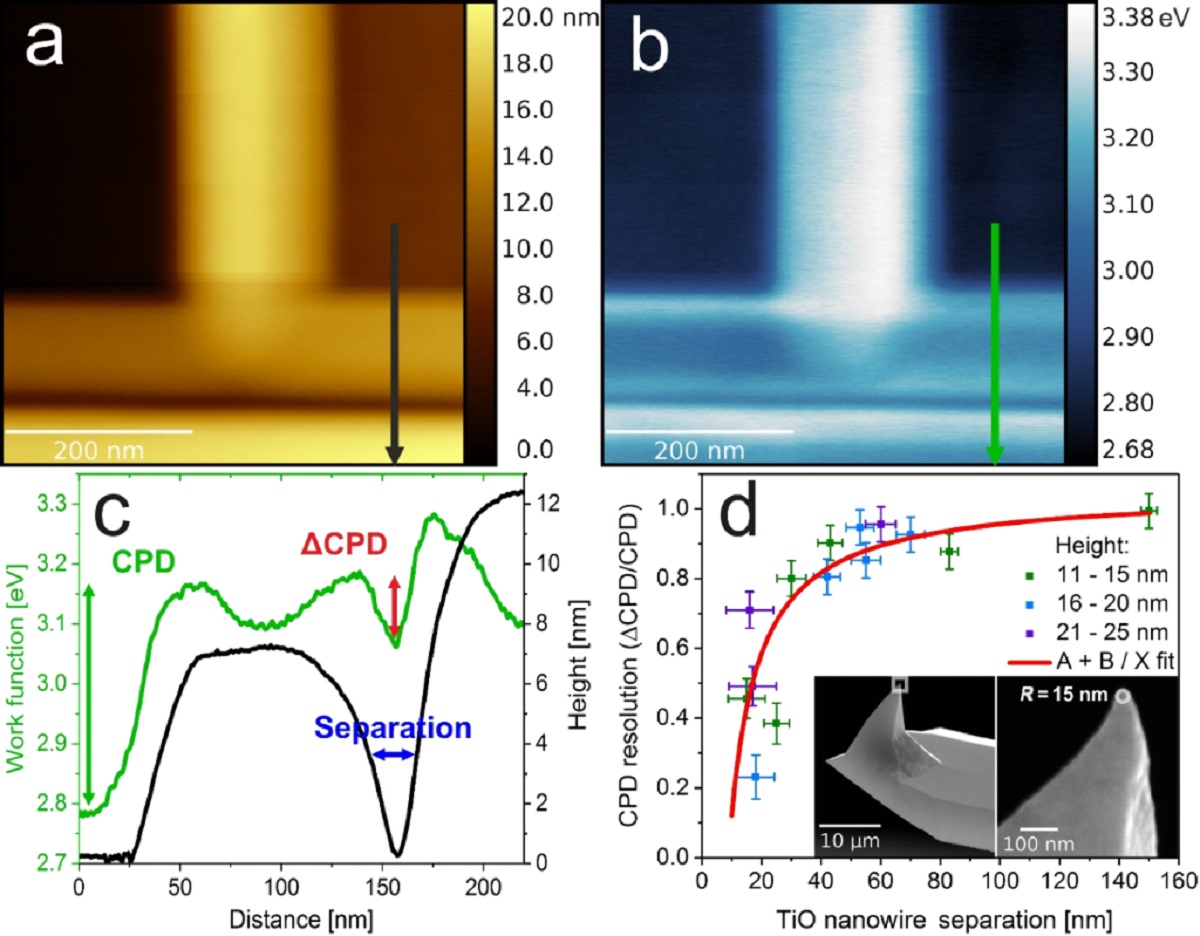Controlling the work function of transition metal oxides is of key importance with regard to future energy production and storage. As the majority of applications involve the use of heterostructures, the most suitable characterization technique is Kelvin probe force microscopy (KPFM), which provides excellent energetic and lateral resolution.*
In their study “Kelvin probe force microscopy work function characterization of transition metal oxide crystals under ongoing reduction and oxidation» Dominik Wrana, Karol Cieślik, Wojciech Belza, Christian Rodenbücher, Krzysztof Szot and Franciszek Krok present the advantages and limitations of the FM-KPFM technique using the example of a newly discovered TiO/SrTiO3(100) (metal/insulator) heterostructure, which has potentially high technological relevance.*
In the same article a combined conductivity and work function study from the same surface area is presented, showing the possibility of obtaining full information on the electronic properties when the KPFM technique is accompanied by local conductivity atomic force microscopy (LC-AFM).*
The authos present the measurement of the crystalline TiO work function and its dependence on the gaseous pressure of air using Kelvin probe force microscopy.
In order to ensure reproducible FM-KPFM results, two different types of AFM cantilevers were used: NANOSENSORS™ PointProbe® Plus PPP-ContPt (PtIr-coated) and NANOSENSORS™ Platinum Silicide PtSi-FM.*
Such cantilevers are widely used as conducting tips in a contact mode AFM, allowing for a high lateral resolution in conductivity measurements. The remarkable mechanical stability of the selected cantilevers allowed for the noncontact mode measurements (with a Kelvin loop) using the very same tip, maintaining oscillations at the higher harmonics of the fundamental frequency (≈75 kHz). Hence, in order to record current and CPD maps from the very same sample area, KPFM measurements were first performed with the soft cantilever forced to oscillate at higher harmonics, then the tip was retracted tens of nanometers from the surface, all feedback loops were turned down and a contact mode AFM scan was performed when approached with a single loop maintaining a deflection set point of 10–30 mV. The high conductivity of both TiO and STO materials enabled a low sample bias of +1 mV for the LC-AFM measurements to be used.*

*Dominik
Wrana, Karol Cieślik, Wojciech Belza, Christian Rodenbücher, Krzysztof Szot,
Franciszek Krok
Kelvin probe force microscopy work function characterization of transition
metal oxide crystals under ongoing reduction and oxidation
Beilstein Journal of Nanotechnology 2019, 10, 1596–1607
DOI: 10.3762/bjnano.10.155
Please follow this external link to read the full article: https://www.beilstein-journals.org/bjnano/articles/10/155
Open Access The article “Kelvin probe force microscopy work function characterization of transition metal oxide crystals under ongoing reduction and oxidation” by Dominik Wrana, Karol Cieślik, Wojciech Belza, Christian Rodenbücher, Krzysztof Szot and Franciszek Krok is licensed under a Creative Commons Attribution 4.0 International License, which permits use, sharing, adaptation, distribution and reproduction in any medium or format, as long as you give appropriate credit to the original author(s) and the source, provide a link to the Creative Commons license, and indicate if changes were made. The images or other third party material in this article are included in the article’s Creative Commons license, unless indicated otherwise in a credit line to the material. If material is not included in the article’s Creative Commons license and your intended use is not permitted by statutory regulation or exceeds the permitted use, you will need to obtain permission directly from the copyright holder. To view a copy of this license, visit http://creativecommons.org/licenses/by/4.0/.